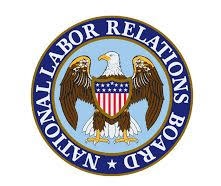In its latest regulatory agenda, the National Labor Relations Board (NLRB) has indicated that it intends to take on defining the standard for determining a joint employer relationship through rulemaking. This effort follows the board’s failed attempt to redefine the joint employer relationship in a case — Hy-Brand — that it had to withdraw because of a member’s conflict of interests.
 “Whether one business is the joint employer of another business’s employees is one of the most critical issues in labor law today,” explains NLRB Chairman John F. Ring.
“Whether one business is the joint employer of another business’s employees is one of the most critical issues in labor law today,” explains NLRB Chairman John F. Ring.
“The current uncertainty over the standard to be applied in determining joint-employer status under the [National Labor Relations] Act undermines employers’ willingness to create jobs and expand business opportunities. In my view, notice-and-comment rulemaking offers the best vehicle to fully consider all views on what the standard ought to be. I am committed to working with my colleagues to issue a proposed rule as soon as possible, and I look forward to hearing from all interested parties on this important issue that affects millions of Americans in virtually every sector of the economy.”
The current standard, stemming from the Obama era, is called “indirect control.”
This “indirect control” standard — meaning corporations like McDonald’s can be held liable for wage, hour and labor violations by its franchisees — was the result of the Obama’s NLRB ruling in Browning-Ferris, a case in which present board member William Emanuel’s previous law firm had been involved.
The Trump NLRB in December reversed that standard in the case known as Hy-Brand, with Emanuel casting one of the three majority votes. The NLRB inspector general, however, ruled Emanuel’s vote unethical because of his previous firm’s involvement in Browning-Ferris, so the board was forced to throw out Hy-Brand, leaving “indirect control” as the reigning standard.
Had Hy-Brand stood, the standard would have reverted to the pre-Obama one of “direct and immediate control,” which is where the board will no doubt take any joint standard rule it issues.
Any proposed rule would require approval by a majority of the five-member Board, and the next step would be the issuance of a Notice of Proposed Rulemaking (NPRM).
